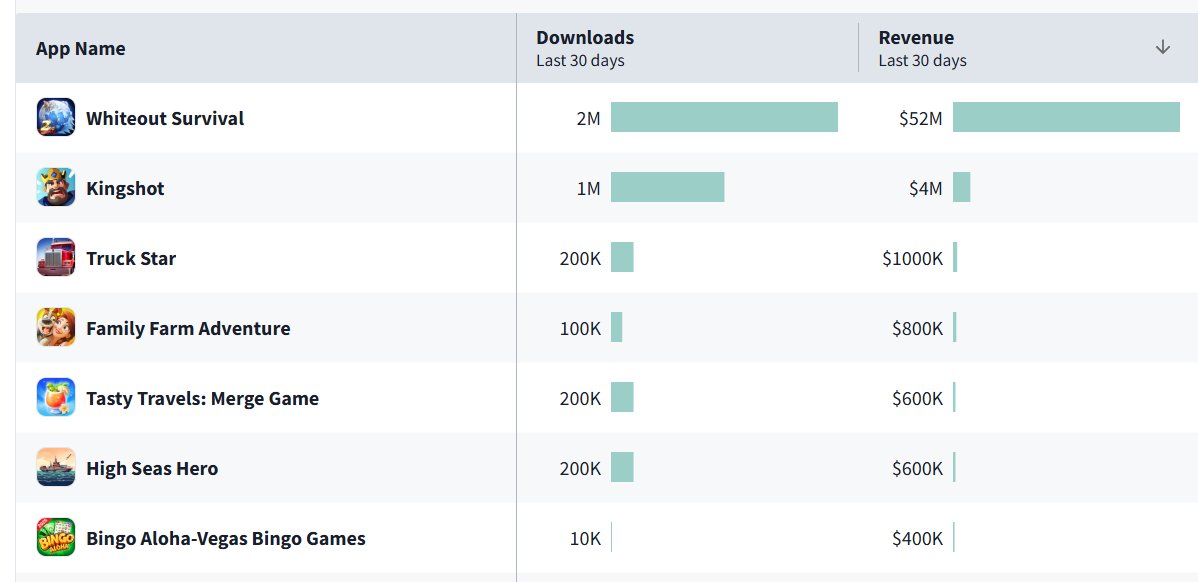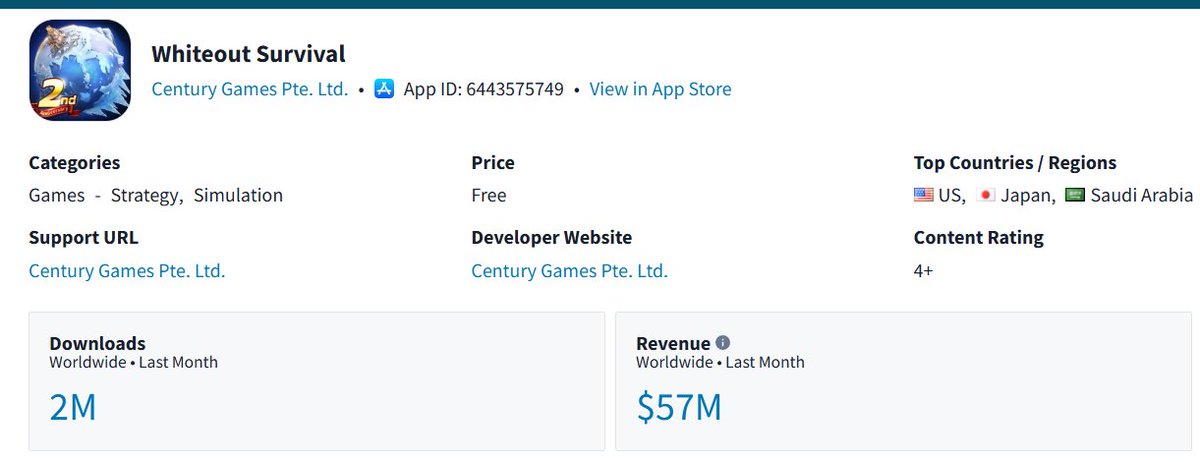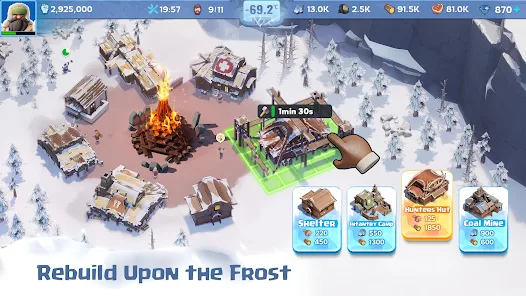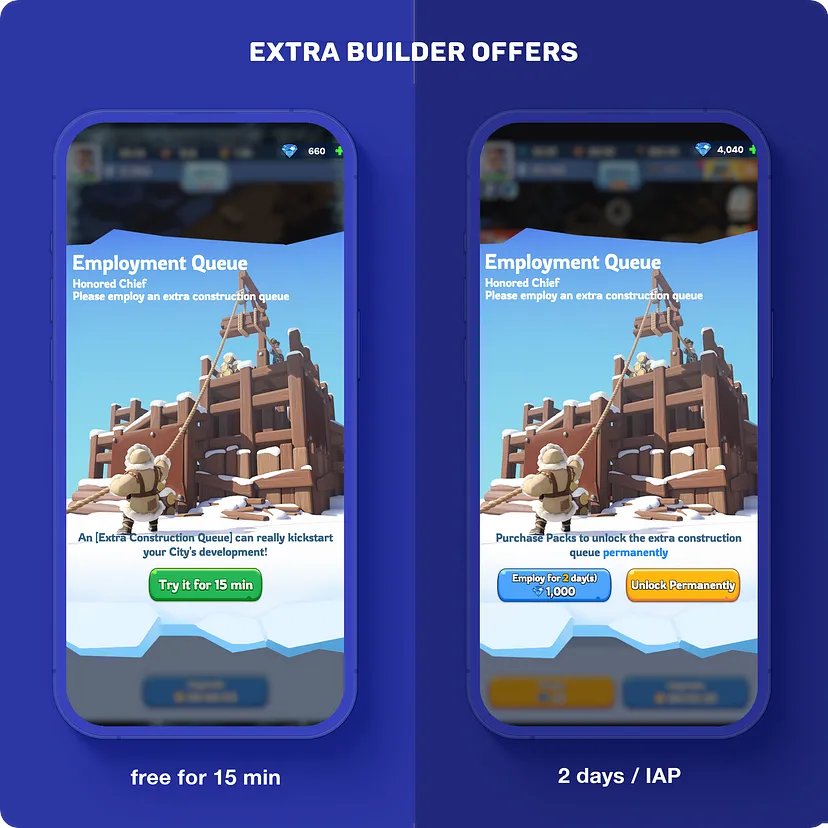While most mobile studios are chasing installs and tweaking ad creatives, one company is quietly running laps around the rest of the industry.
Century Games, a low-profile Chinese game publisher, is now generating $60 million a month.
Not from dozens of hits. Just one blockbuster, a few solid performers, and a brutally effective growth system.
Let’s break down how they’re doing it — and what game builders, app founders, and growth teams can learn from it.
The $2 Billion Game Behind the Numbers
Century Games has 16 active titles on the App Store.

But make no mistake — their empire is powered by one game:
Whiteout Survival, a post-apocalyptic strategy title that accounts for nearly 90% of total revenue.

Released just 2 years ago, Whiteout Survival has already grossed over $2 billion across iOS and Android.
The other 10+ games? Many pull in over $100K/month — but they’re just supporting acts.
Performance Marketing at Unmatched Scale
To fuel this kind of growth, Century Games didn’t just run ads — they ran a global blitz:
-
425,000+ ads
-
Across 54 countries
-
On 17 different platforms
It’s one of the most expansive mobile UA operations on record.
While most studios test a few dozen creatives, Century tests hundreds of thousands — localized, iterated, and aggressively optimized for conversion.
The Math Behind the Money
Let’s break down the economics:
-
Total estimated downloads: ~80 million (50M Android + 30M iOS)
-
Assume 60% of those are paid installs → 48M
-
At $2 CPI, that’s $96M spent to acquire most of their base
When you’re making $2B+, $96M is just a rounding error.
In fact, even if their true CPI is higher (say $4–5), the payback window and LTV clearly support it. This is a high-margin engine running at full throttle.
Gameplay That Hooks — and Monetizes
Set in a frozen post-apocalyptic world, Whiteout Survival puts players in charge of rebuilding civilization in a hostile wasteland.

It’s resource management meets city building meets survival storytelling.
But what really sets it apart is how intelligently monetized every step of the journey is.
Smart Monetization Strategy #1: Worker Trial Trick
You start building with one worker.
The game gives you a 15-minute trial of a second worker — just enough to experience how much faster progress feels.

Then? It’s gone. And if you want it back, you pay.
This isn’t just upselling. It’s first-hand friction, designed to create desire before a paywall even appears.
Smart Monetization Strategy #2: Battle Pass Variety
Instead of one generic pass, Whiteout offers multiple themed passes:
-
One for hero collection
-
One for base building
-
Others for resource gathering
Each aligns with a different playstyle or current goal — making purchases feel personalized and purposeful.
It’s modular monetization. More context = higher conversion.

Smart Monetization Strategy #3: Custom Chest Offers
Whiteout flips the usual “loot box” model.
Instead of randomized bundles, it offers Custom Chest Offers — where players hand-pick the items they want (speed-ups, resources, boosts).
This gives players a sense of control over purchases — and removes the “wasted spend” friction that often kills conversion.
Personalization → agency → spend.
The Real Lesson: Ruthless Execution Beats Originality
There’s no wild innovation in Whiteout Survival.
It borrows proven mechanics from other genres and games. What makes it different is relentless optimization:
-
A killer onboarding funnel
-
Thoughtful monetization experiments
-
Aggressive creative testing
-
Global paid distribution at massive scale
This isn’t a passion project. It’s a precision growth machine, designed to convert, retain, and scale.
Final Thoughts
Century Games didn’t reinvent the wheel. They just turned it faster than anyone else.
Their $60M/month engine runs on timeless growth levers:
✅ Compelling game loop
✅ Emotional, friction-based monetization
✅ Scalable UA spend
✅ High-velocity creative testing
✅ Global reach
If you’re building a mobile app or game in 2025, you don’t need 20 ideas.
You just need 3–4 moves that compound — and the discipline to scale them ruthlessly.
